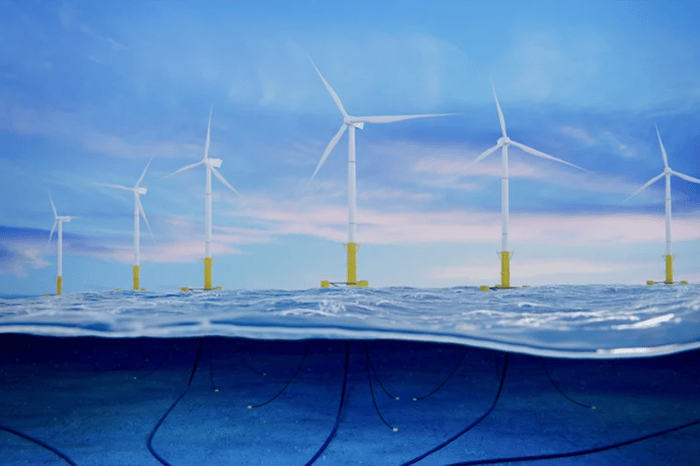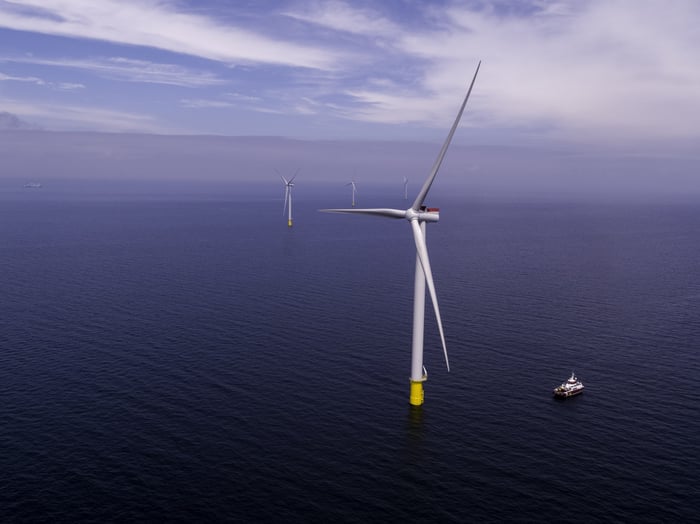
About the Course
Offshore Wind Power Cable Management is an immersive three-day programme designed for professionals involved in the offshore wind industry. This course aims to provide participants with a thorough understanding of the entire lifecycle of subsea power cables, which are critical components in offshore wind farm operations. From the initial design and construction to the intricate processes of installation, inspection, maintenance, and eventual repair, this programme covers every aspect necessary to ensure the integrity and reliability of power cables.
The course begins with a foundational overview of offshore wind energy, addressing global trends, industry developments, and the unique challenges posed by the marine environment. Participants will delve into the specifics of various cable types used in offshore wind farms, including inter-array, export, and fibre optic cables. Detailed discussions on the design and construction of these cables will provide a strong technical foundation, emphasising the importance of robust design in preventing future failures.
On the second day, the focus shifts to the technical challenges associated with cable failures. Participants will learn about the different types of mechanical, electrical, and environmental failures that can occur. The course will introduce advanced techniques for detecting, diagnosing, and preventing these failures, ensuring that participants are well-equipped to handle real-world challenges. Inspection methods such as acoustic, visual, and electromagnetic techniques will be covered in depth, along with the use of ROVs for underwater inspections.
The final day is dedicated to the maintenance and repair of power cables. Participants will gain insights into planning and executing maintenance activities, selecting appropriate repair strategies, and overcoming common challenges. The course will also cover future trends and innovations in cable technology, providing a forward-looking perspective on the field. Real-world case studies from successful offshore wind projects will be used throughout the programme to illustrate best practices and lessons learned.
Interactive learning sessions, group projects, and networking opportunities with industry experts are integral parts of this course, enhancing the learning experience. Participants will engage in hands-on exercises that simulate real-world scenarios, allowing them to apply their knowledge in practical settings. These activities are designed to foster collaboration and facilitate the exchange of ideas among professionals from diverse backgrounds.
By the end of the programme, attendees will have acquired a comprehensive understanding of offshore wind power cable management. They will be equipped with the skills and knowledge necessary to ensure the operational reliability and longevity of subsea power cables. Whether you are looking to advance your career, improve the performance of your projects, or stay ahead of industry trends, this course offers the tools and insights needed to achieve your goals.
Who's it for
-
Project Managers: Gain the expertise to oversee the lifecycle of offshore wind power cables, ensuring project success from planning to decommissioning.
-
Electrical Engineers: Deepen your technical knowledge in the design, installation, and maintenance of subsea power cables, essential for reliable offshore wind farm operations.
-
Maintenance Engineers: Enhance your skills in advanced inspection, failure diagnosis, and effective repair strategies for subsea cables.
-
Risk Management Specialists: Learn to identify, assess, and mitigate risks associated with offshore wind power cables, ensuring operational integrity and safety.
-
Operations Managers: Acquire practical knowledge to maintain the reliability and performance of offshore wind power cables, optimizing operational efficiency.
-
Regulatory Compliance Officers: Understand the regulatory frameworks and technical standards necessary for managing offshore wind power cables in compliance with industry regulations.
Learning Objectives
-
Understand the principles and technologies behind offshore wind power cables.
-
Gain comprehensive knowledge of the lifecycle of subsea power cables from design to decommissioning.
-
Learn about various types of cable failures and their prevention, detection, and diagnosis.
-
Develop skills in using advanced inspection techniques and tools.
-
Plan and execute effective maintenance and repair strategies for power cables.
-
Latest trends and innovations in cable technology.
Course Content
-
Day One
Introduction to Offshore Wind
-
Offshore wind energy basics
-
Advantages and challenges of offshore wind
-
Key components of offshore wind farms
-
Global market trends and developments
Lifecycle of Subsea Power Cables
-
Conceptual design and planning
-
Manufacturing and quality control
-
Transportation and storage
-
Installation, commissioning, and decommissioning
-
Types of Cables
-
Inter-array cables
-
Export cables
-
Fiber optic cables
-
High-voltage direct current (HVDC) and high-voltage alternating current (HVAC)
Design and Construction
-
Cable materials and components
-
Selection of appropriate cable type and size
-
Insulation and protection systems
-
Quality control and testing during manufacturing
Installation Process
-
Cable laying methods (surface, jetting, and ploughing)
-
Offshore cable installation vessels
-
Seabed preparation and route optimisation
-
Onshore and offshore cable connections
Mitigation of Risk
-
Identifying and managing potential risks
-
Environmental impact assessments
-
Route selection and burial depth considerations
-
Cable protection systems and devices
Cable Integrity
-
Importance of cable integrity for offshore wind farm operations
-
Factors affecting cable integrity
-
Monitoring and assessment of cable integrity
-
Proactive maintenance and inspection strategies
Types of Cable Failures
-
Overview of cable failure types
-
Pre-installation vs. post-installation failures
-
Frequency and impact of various failure type
Mechanical Failures
-
Causes of mechanical failures (e.g., manufacturing defects, handling, and installation issues)
-
Impact of mechanical failures on cable performance and lifespan
-
Prevention and mitigation of mechanical failure
Electrical Failures
-
Causes of electrical failures (e.g., insulation breakdown, conductor defects, and connector issues)
-
Impact of electrical failures on cable performance and power transmission
-
Prevention and mitigation of electrical failures
External Failures
-
Causes of external failures (e.g., fishing activity, dredging, and anchor strikes)
-
Impact of external failures on cable performance and environmental concerns
-
Prevention and mitigation of external failures
Cable Failure Detection and Diagnosis
-
Monitoring systems and techniques for detecting cable failures
-
Fault location and diagnosis methods
-
Importance of accurate and timely diagnosis for effective repairs
Cable Failure Statistics and Trends
-
Analysis of historical cable failure data
-
Common trends and patterns in cable failures
-
Lessons learned and best practices for reducing cable failure rates
-
-
Day Two
Acoustic Inspection Techniques
-
Introduction to acoustic inspection methods
-
Applications of sonar systems (e.g., side-scan, multibeam, and synthetic aperture)
-
Advantages and limitations of acoustic inspections
Visual Inspection Techniques
-
Introduction to visual inspection methods
-
Use of underwater cameras and video systems
-
Advantages and limitations of visual inspections
Electromagnetic Inspection Techniques
-
Codes and standards
-
Materials and makeup
-
Inspection, monitoring and testing methods
-
Design and installation incidents
-
Deterioration and damage
Role of ROVs in Inspections
-
Types of ROVs and their applications
-
Integration of inspection tools and sensors with ROVs
-
Navigating and positioning ROVs for effective inspections
-
Advantages and limitations of using ROVs in cable inspections
Inspection Planning and Frequency
-
Importance of regular inspections in cable management
-
Determining appropriate inspection intervals and techniques
-
Coordination with maintenance and repair activities
Data Analysis and Reporting
-
Processing and interpretation of inspection data
-
Identifying potential issues and assessing cable condition
-
Communicating inspection findings to stakeholders
-
Integration of inspection data into cable management systems
Maintenance of Power Cables - Overview
-
Importance of regular maintenance
-
Maintenance planning and scheduling
-
Preventive and corrective maintenance approaches
-
Cable condition monitoring techniques
Repair Process Overview
-
Diagnosis of cable faults and damages
-
Selection of appropriate repair strategies
-
Mobilisation of resources and equipment
-
Coordination with stakeholders and regulatory bodies
Repair Strategies
Splicing
-
Applications and limitations
-
Jointing techniques and materials
-
Quality control and testing
Patching
-
Applications and limitations
-
Selection of appropriate patch materials
-
Quality control and testing
Replacement
-
Applications and limitations
-
Cable removal and disposal
-
Installation of new cable sections
-
Quality control and testing
Challenges and Best Practices
-
Environmental considerations and impact mitigation
-
Minimising downtime and associated costs
-
Ensuring the safety of personnel and equipment
-
Adhering to industry standards and regulatory requirements
Future Trends and Innovations
-
Advances in cable materials and design
-
Emerging maintenance and repair technologies
-
Remote and autonomous repair solutions
-
Predictive maintenance and digital twins
-
-
Day Three
Importance of Cable Risk Management
-
Role of risk management in maintaining cable integrity
-
Consequences of inadequate risk management
-
Relationship between risk management, inspections, and maintenance
Cable Burial Risk Assessments (CBRA)
-
Overview of CBRA methodology
-
Identifying and evaluating potential risks to cables
-
Determining appropriate burial depths and protection measures
-
Integration of CBRA results into cable installation and management plans
Other Risk Assessment Techniques
-
Hazard identification (HAZID) and hazard and operability (HAZOP) studies
-
Failure modes and effects analysis (FMEA)
-
Quantitative risk assessments (QRA)
Risk Mitigation Strategies
-
Selection and implementation of appropriate risk mitigation measures
-
Cable protection systems and devices
-
Redundancy and backup power solutions
-
Monitoring and early warning systems
Insurance for Subsea Power Cables
-
Introduction to insurance in the context of offshore wind power cable management
-
Types of insurance policies available for covering cable-related risks
-
Factors influencing insurance premiums and coverage
-
Role of insurance in risk management and financial planning
-
Claims management and the role of insurers in cable repair and replacement
Regulatory and Industry Standards
-
Overview of relevant regulations and guidelines
-
Compliance with industry best practices and standards
-
Environmental considerations in risk management
Developing a Risk Management Plan
-
Identification of key risks and their potential impacts
-
Prioritisation of risks and allocation of resources
-
Integration of risk management activities with other cable management processes
-
Regular review and update of risk management plans
Overview of Case Study Analysis
-
Importance of analysing case studies in cable management
-
Selection of relevant case studies for discussion
-
Framework for analysing case studies and drawing lessons learned
Mechanical Failure Case Studies
-
Analysis of incidents involving mechanical cable failures
-
Identification of root causes and contributing factors
-
Lessons learned and best practices for preventing mechanical failures
Electrical Failure Case Studies
-
Analysis of incidents involving electrical cable failures
-
Identification of root causes and contributing factors
-
Lessons learned and best practices for preventing electrical failures
External Failure Case Studies
-
Analysis of incidents involving external cable failures
-
Identification of root causes and contributing factors
-
Lessons learned and best practices for preventing external failures
Successful Cable Management
-
Case studies of successful cable management and maintenance practices
-
Identification of key factors contributing to success
-
Best practices and lessons learned for effective cable management
Emerging Challenges and Opportunities
-
Analysis of case studies involving new technologies or innovative approaches
-
Evaluation of the effectiveness of these solutions in addressing cable management challenges
-
Lessons learned and future directions for cable management in the offshore wind industry
-
Learning Outcomes
Upon completion of this course, participants will be able to:
-
Master the fundamentals of offshore wind power generation and subsea power cable transmission.
-
Explore the diverse types of subsea power cables and their design, construction, and installation.
-
Identify common causes of cable failures and their potential consequences.
-
Evaluate various cable inspection techniques and the crucial role of ROVs.
-
Apply maintenance and repair strategies to address cable damages and failures effectively.
-
Conduct comprehensive cable risk management assessments, including CBRA.
-
Analyse real-life case studies and implement best practices for cable management and risk mitigation.
-
Class Materials
- Case studies that explore real-world cable challenges and their solutions.
- A comprehensive course package detailing all essential topics and technical data.
- Detailed notes from the tutor, Tory, offering additional insights and expertise.
- A collection of references and practical worked examples to deepen understanding and application of the material.
-
Jeenius
Participants in the course gain access to Jeenius, a cutting-edge learning platform that offers comprehensive support tools. This platform includes all course notes, recordings of the sessions for later review, and the opportunity for one-on-one support with the tutor. Additionally, Jeenius provides access to the latest insights in renewable energy enhancing the learning experience with up-to-date industry knowledge.
-
In-Company Delivery
For in-company delivery options and content customisation to meet your specific needs, please don't hesitate to reach out to us.
-
Fee
£1,995 per person.
A discount is available if registering 3+ people.
Book one of our courses below:
Your Tutor

Troy Brown
B.Geo.E (Hons), B.A
LEAD CABLES TUTOR
Troy Brown has led significant projects, including the 525kV HVDC grid connections for the BP windpark and the Ostwind projects in the North and Baltic Seas. He has successfully managed grid connections for Iberdrola’s Baltic Eagle and Parkwind’s Arcadis Ost 1 Offshore Windfarms, overseeing the installation of hundreds of kilometres of 220kV HVAC subsea cables. At Vattenfall, he directed the Thanet Export Cable Replacement project and managed the subsea cable packages for major offshore wind farms like Vesterhav and Danish Kriegers Flak. His role included everything from project setup and tender preparation to budget management and government liaison, ensuring seamless project execution.
Testimonials
"An excellent programme that enhanced my knowledge of renewable technologies and their impact on grid systems"
"The blend of theory and practical insights on new technologies was exactly what I needed. Excellent course!"
Similar Courses



